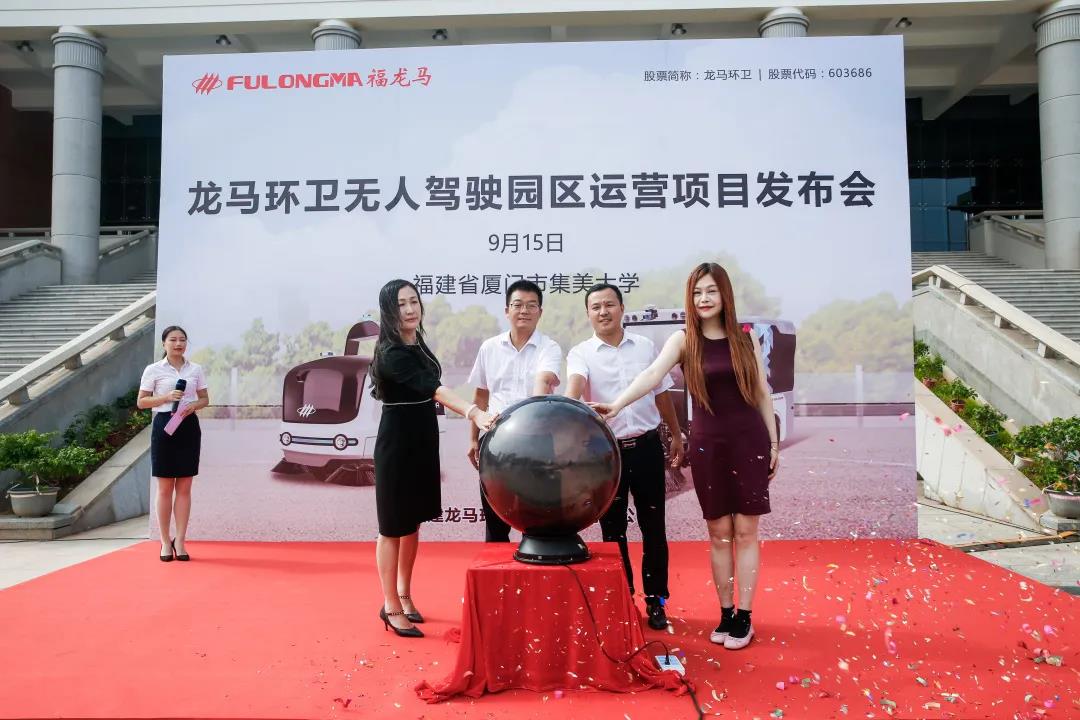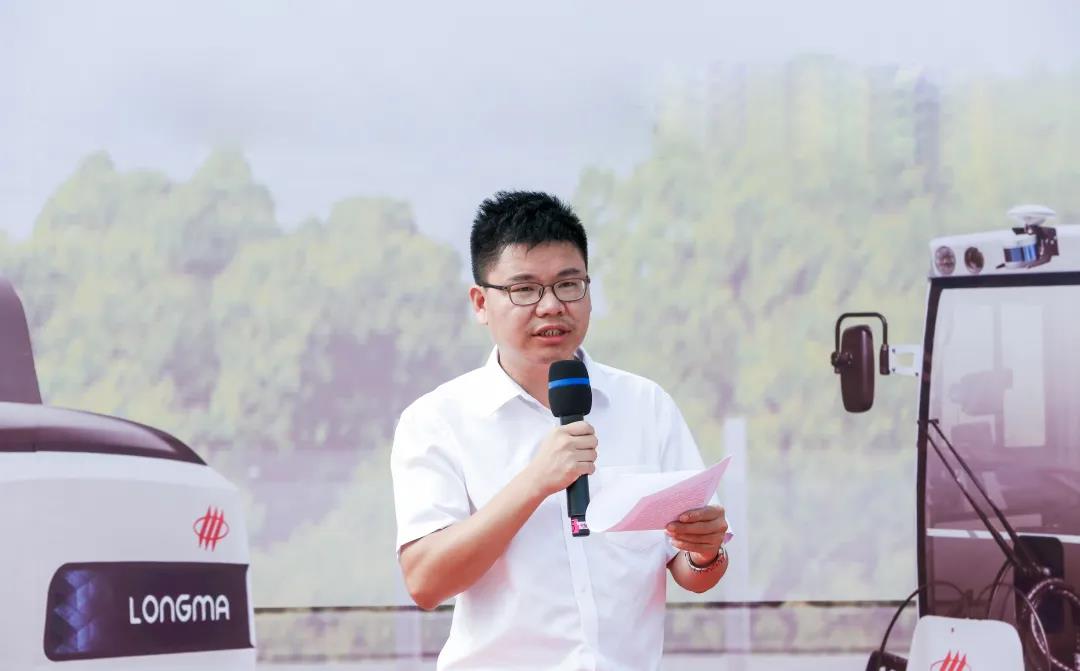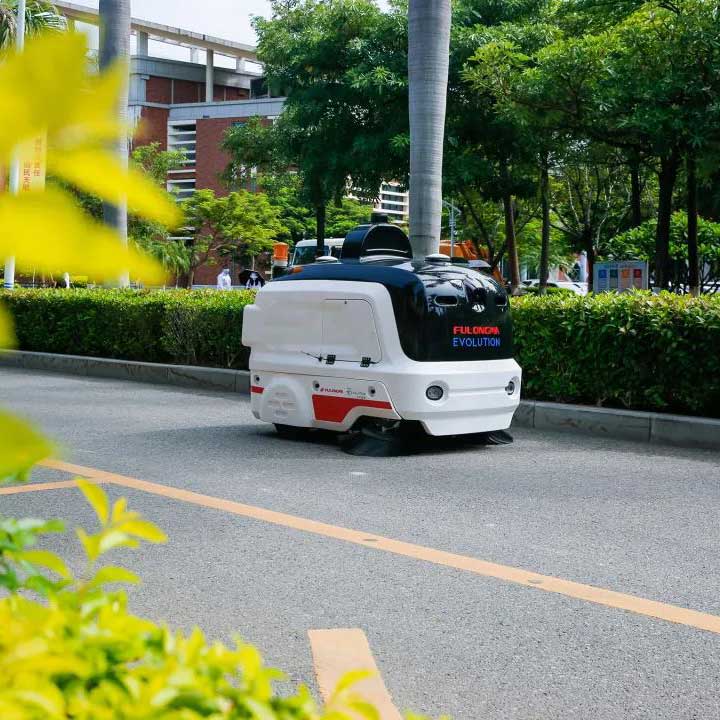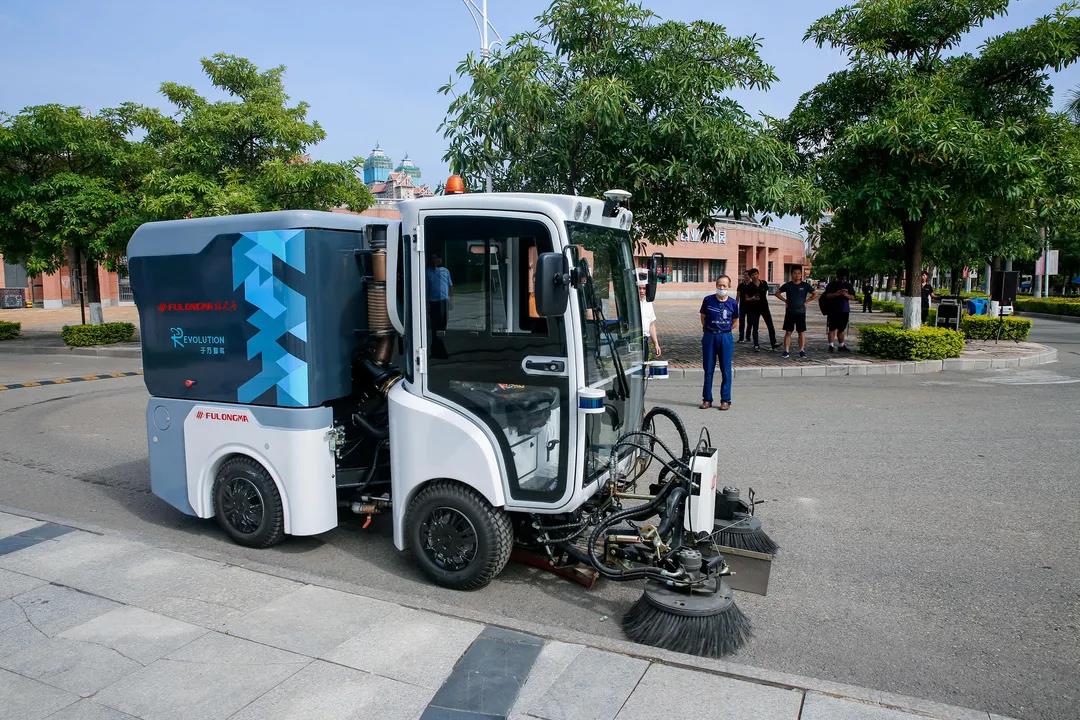In recent years, with the continuous development of society and the economy, the area of road sweeping and cleaning in China has steadily increased, and the sanitation industry is transforming from manpower to mechanization. At present, the overall mechanized cleaning rate of China’s environmental sanitation is 65%. In the context of increasing overall requirements for environmental sanitation services and increasing demand for mechanization, the sanitation industry is facing a series of problems. Given these industry problems, unmanned vehicle cleaning is the most effective solution at present—it is expected to save more than 60% of manpower for sanitation services, thereby saving more than 40% of costs…

On September 15, the FULONGMA Unmanned Driving Park Operation Project Press Conference was held at Xiamen Jimei University. Yunlong Bai, Executive Vice President and General Manager of the Equipment Division, Fuhai Luo, Vice President and General Manager of the Sanitation Operation Division, and the leader of Xiamen projects, Xinhui Wu, and other leaders and industry media attended the press conference. The purpose of this event is to further promote the accelerated implementation of sanitation and driverless technology and a substantial improvement in the level of intelligent management.

At the conference, senior engineers from FULONGMA Research Institute introduced the new products released this time—the FLMSD10 and FLMSD18 intelligent road sweepers, they are both developed for specific operating characteristics and needs. In terms of hardware architecture, the intelligent driving system mainly uses lidar as the main sensor, combined with GPS/IMU, millimeter-wave radar, ultrasonic radar, etc., runs various algorithm modules on professional vehicle domain controllers, and controls vehicle driving operations through wire control technology. In terms of software architecture, it mainly involves the integrated research and development of environment perception fusion technology of unmanned driving, automatic navigation, positioning technology, and intelligent path planning technology. That is, a variety of sensors are used to identify the surrounding environment status of the road sweeper, and perform autonomous analysis based on the obtained environmental information (including road information, traffic information, vehicle location, and obstacle information, etc.), to autonomously control the movement of the vehicle and realize the unmanned driving and cleaning operation.

After the conference, General Manager Yunlong Bai accepted an interview. He said: FULONGMA has always maintained innovative exploration in the field of sanitation equipment. The lean, intelligence, and miniaturization of the equipment are the direction of the company’s efforts in equipment R&D in the future. Applying unmanned driving technology to sanitation equipment, and continue to develop intelligent sanitation equipment suitable for various conditions is an important path for FULONGMA to realize the strategy of “smart sanitation”.
The use of two L4 unmanned products at this conference means that the operation project of Jimei School District will become FULONGMA’s first unmanned sanitation operation project, and it also marks the formal entry into the field of “unmanned sanitation operation” of FULONGMA. It is one of the most important milestones since FULONGMA developed the sanitation operation business. Through extremely robust algorithms, stable computing platforms, high-precision sensors, and unmanned driving control chips, FULONGMA’s unmanned road sweepers will be able to reach or even exceed the response speed of humans. The application of unmanned equipment will solve the problems of labor shortage, aging population, high road operation risk, and difficulty of personnel supervision in the current industry. At the same time, the savings in operating costs such as labor costs can allow users to recover the cost of using the unmanned equipment’s software and hardware in the shortest two years, greatly saving project operating costs.

FLMSD10 intelligent road sweeper is an electric, unmanned small road cleaning product developed for urban sidewalks, alleys, parks, and squares. The sweeper has good maneuverability, high passability, strong cleaning ability, less raised dust, and can effectively carry out sweeping and cleaning operations in places where large cleaning equipment cannot enter. Its intelligent system uses SLAM technology, which can construct accurate three-dimensional maps of unknown complex environments. Combined with the dynamic path planning technology, the system solves the problem of excessive dependence on the performance of satellite signals and inertial devices, and greatly improves the positioning accuracy and reliability, enabling the road sweeper to perform autonomous positioning and navigation.

The FLMSD18 intelligent road sweeper is equipped with a new-generation intelligent driving system. The system is based on a capsule cyclic deep learning network, integrates multi-modal vehicle environment information, and uses a geometric confrontation generation network to realize the real-time combination of multi-modal features and accurately perceive unknown environments, making it widely used for cleaning and sweeping operation in parks, squares, auxiliary roads, and other areas. The intelligent road sweeper integrates functions such as the wire-controlled drive system, curbstone cleaning, automatic tracking, automatic obstacle avoidance, intelligent voice interaction, etc. It can also automatically change the cleaning mode according to road conditions to reduce energy consumption and improve efficiency.
The system uses advanced wireless communication technology to upload the status of the unmanned road sweeper (such as GPS coordinate information, road sweeper health status, multi-sensor information, etc.) to the cloud, combined with big data and artificial intelligence to strengthen the road sweeper’s understanding of the traffic situation to realize intelligent path planning. Besides, for path planning in specific conditions, it can not only autonomously make the most reasonable decisions by combining the best cleaning route and real-time location of the day, but can also use the “Sanitation Cloud Platform Control System” for task scheduling and vehicle management. The sweeper has the characteristics of saving manpower, safety, and precise positioning. It is a benchmark product in the development of environmental sanitation equipment and is called the “smart housekeeper” of the city. It can solve the problems of dirty, difficult, and low efficiency of works in the sanitation industry, making cleaning more standardized and efficient, and significantly reduce operating costs.

